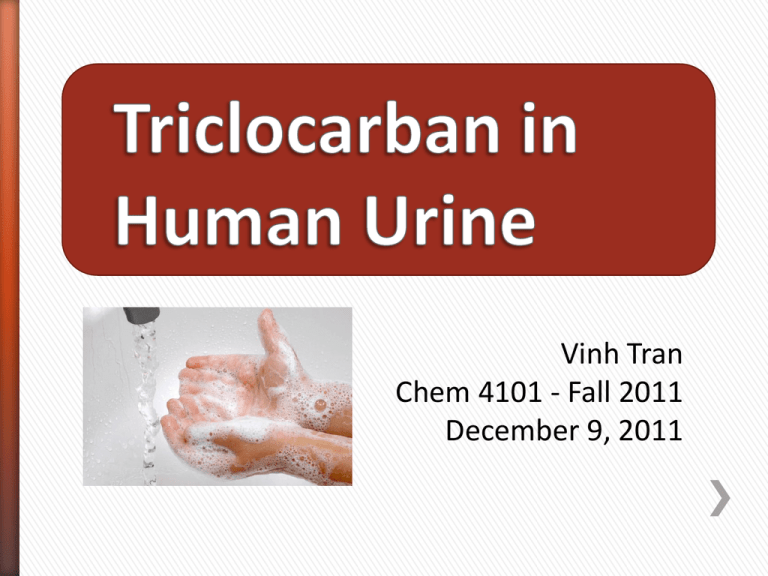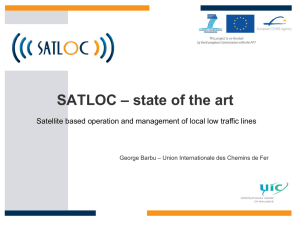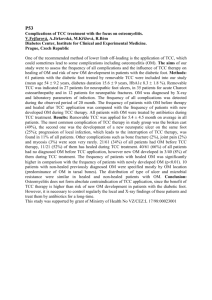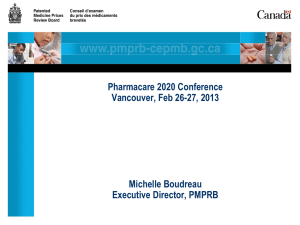Triclocarban in Human Urine Presentation
advertisement

Vinh Tran Chem 4101 - Fall 2011 December 9, 2011 • Triclocarban (TCC, 3,4,4’trichlorocarbanilide) is one of the most widely used antimicrobial agents found in soaps and personal care products.1 • In the United States, many antimicrobial bar soaps contain up to 1.5% of TCC. 1 • Due to its widespread use, TCC have been found in surface waters and in biological organisms such as algae and snails. 1 Triclocarban MW: 315.58 g/mol Triclosan (possible contaminant) MW: 289.54 g/mol • Studies show at high concentrations, TCC may act as an agonist to testosterone and other steroids also known as endocrine disrupting substances (EDS). 1,2 • Animal studies show EDS are linked to cancer, reproductive failure, and developmental anomilies. 1,2 With continued use of antimicrobial agents and soaps through daily hygienic activities TCC will enter into the human biological system. By analyzing urine samples, human exposure to TCC will be detected. 1. Representative sample group chosen from individuals with similar detergent usage/habits – this minimizes fluctuation in analysis 2. Divide into two main focus areas: 1. Shower study – personal hygiene 2. Dish study – TCC ingestion through use of utensils, etc. 3. Prior to experiment, participants will be given shampoo/body wash or dish washing detergent not containing TCC (sample standard) 4. Analyze urine samples daily for each participant 1. Control (non TCC Dish and Shower) 2. Dish Study (TCC dish and non TCC shower) 3. Shower Study (non TCC Dish and TCC Shower) 4. Dish and Shower Study (TCC Dish and Shower) Method Advantages Disadvantages UV-Vis Spectrometry Rapid means of analysis, high precision Not selective for TCC because a contaminating species (TCS) absorbs at similar wavelength4 Capillary Electrophoresis High separation efficiency (more theoretical plates), separates based on charge and size With such small sample size may not detect material after separation accurately, reproducibility Electrochemistry Allows detection of possible stable intermediates Time efficiency, would still require LC to quantify analytes 5 A HPLC/MS-triple quadrupole analytical method will be used to quantify and detect trace levels of Triclocarban. This method was chosen because liquid chromatography will allow separation of polar contaminating analytes in the matrix and a triple quadrupole MS will allow the selective identification and quantification of TCC in the urine samples. • The samples will be ran in reverse-phase since TCC is a hydrophobic and polar compound allowing for its rapid elution time. • Although GC is a more sensitive technique and would provide better trace analysis, TCC has low volatility and thus would not be compatible. Direct Urine Analysis Aliquots of urine will be mixed with an internal standard (IS) solution 1/1 (v/v), vortexed, followed by centrifugation Samples will be directly injected to the HPLC column for analysis Urine Analysis after Hydrolysis HCl added to sample to produce final acid concentration of 1M Mixtures are vortexed and neutralized with 6M aq NaOH Aliquots of resulting solution will be mixed with IS solution 1:4 (v/v) and analyzed • Isotopically labeled TCC (4’-Chlorophenyl-13C6) will be used as the internal standard. • Deuterated TCC will also be used a control • HPLC: The mobile phase will be 70% acetonitrile/30% water, 10 mM acetic acid, 0.4 mL/min3 • Column: C18, 2.1 x 50 mm, 1.7 µm • Mass spectrum of samples will be analyzed in comparison to the standard and control Figures of Merit1 Limit of Detection: Limit of Quantification: 0.05 nM = 15.8 ng/L 0.3 nM = 94.7 ng/L Agilent 6400 LC/MS-triple quad http://www.chem.agilent.com/en-US/Products/Instruments/ms/lcms/systems/6410triplequadrupolelcms/pages/default.aspx Relative Intensity (%) • The expected mass spectrums of TCC (A) and deuterium labeled TCC (B) are indicated by the peaks at 315 and 322 m/z.3 • The TCC acetic adduct is also observed at 375 and 382 m/z. 3 • The internal standard peak will observed at 328 m/z (spectrum not shown) 300 325 m/z 350 375 Using HPLC/MS as the analytical technique, this method will allow adequate detection of trace amounts of Triclocarban in human urine samples of the two separate studies of hygiene and dish exposure to the antimicrobial agent. A study of the rate of disappearance of TCC in the human biological system may aid in future toxicological studies. The alternative electrochemical method that was not chosen because of cost and time efficiency may provide further evidence for the ingestion of TCC by detecting its two hydroxylated derivatives and two nitro derivatives.5 1. Schebb, N. H.; Inceoglu, B.; Ahn, K. C.; Morisseau, C.; Gee, S. J.; Hammock, B. D. Investigation of Human Exposure to Triclocarban after Showering and Preliminary Evaluation of its Biological Effects. Environ. Sci. Technol. 2011, 45, 3109-3115. 2. ScienceDaily. Antibacterial Chemical Disrupts Hormone Activities, Study Finds. http://www.sciencedaily.com /releases/2007/12/071207150713.htm (accessed September 19, 2011). 3. Halden, R. U.; Paull, D. H.; Analysis of Triclocarban in Aquatic Samples by Liquid Chromatography Electrospray Ionization Mass Spectrometry. Environ. Sci. Technol. 2004, 38, 4849-4855 4. Jungerman, E.; Beck, E.C. Determination of Germicide Mixtures in Soaps and Detergents. Journal of the American Oil Chemist's Society. 1961, 38, 513-515 5. Sires, I.; Oturan, N.; Oturan, M. A.; Rodriguez, R. M.; Garrido, J. A.; Brillas, E. Electro-Fenton Degradation of Antimicrobials Triclosan and Triclocarban. Electrochimica Acta. 2007, 52, 5493-5503









